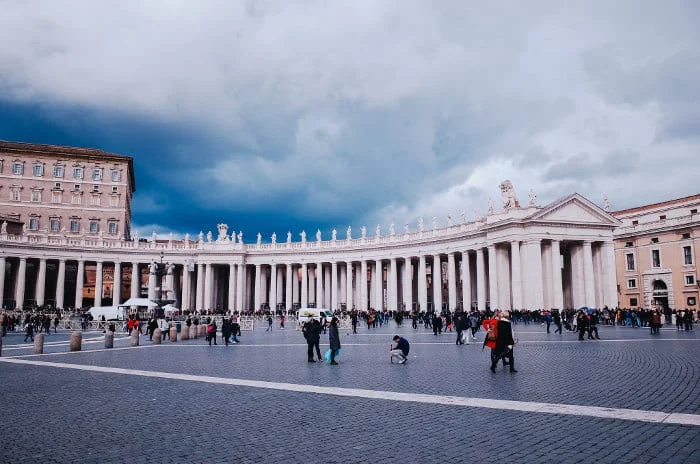Detailed information about the attraction. Description, photographs and a map showing the nearest significant objects. The name in English is Apostolic Palace.
 |
| Apostolic Palace |
The Apostolic Palace is the official residence of the Pope, located in the Vatican. Also known as the Papal Palace and the Vatican Palace. In the Vatican itself, the building is called the Palace of Sixtus V in honor of Pope Sixtus V.
The Apostolic Palace consists of the Papal Apartments, various office spaces of the Catholic Church and the Papal See, private and public chapels, the Vatican Museums and the Vatican Library, including the Borgia Apartments, now used for art storage.
 |
| Apostolic Palace |
Returning to Rome in 1377 after the Avignon captivity, the Pope's court first chose the Basilica of Santa Maria in Trastevere as its residence, and then the Basilica of Santa Maria Maggiore. By that time, the old Vatican Palace had fallen into complete decay, and the Lateran Palace, which was once the official residence of the Popes, was twice subjected to serious fires. In 1447, Pope Nicholas V demolished the old fortified building in order to build the current Apostolic Palace in its place. Then, over one and a half hundred years, the palace was completed and decorated. It began to acquire its present appearance at the end of the 16th century under Pope Sixtus V. In the 20th century, by order of Pope Pius XI, a monumental entrance to the art gallery and museum was built.
To be precise, the Apostolic Palace consists of several detached buildings located around the courtyard of Sixtus V (Cortile di Sisto V). It stands northeast of St. Peter's Bastion, next to the Bastion of Nicholas V and Palazzo Gregorio XIII.
 |
| Apostolic Palace |
The Borgia Apartments are a series of rooms in the palace for the personal use of Pope Alexander VI (Rodrigo de Borgia). It was he who, at the end of the 15th century, commissioned the Italian artist Pinturicchio to decorate the apartments with frescoes. The rooms are part of the Vatican Library and the Vatican Museum - most of them are now occupied by the Vatican collection of modern religious art, which began in 1973 at the initiative of Pope Paul VI.
The Clementine Hall was created in the 16th century by order of Pope Clement VIII in honor of his predecessor, Pope Clement I. Like other chapels and apartments in the palace, this hall is notable for its huge collection of frescoes and other works of art.
But perhaps the most famous premises of the Apostolic Palace is the Sistine Chapel, named after Pope Sixtus IV. She is famous for her frescoes, on which the outstanding masters of the Renaissance worked - Michelangelo, Sandro Botticelli, Pietro Perugino, Pinturicchio, Domenico Ghirlandaio and others.
